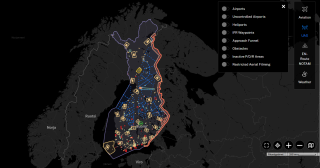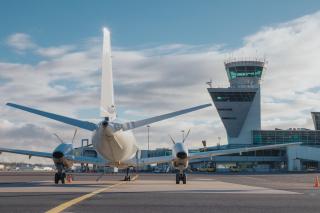Every day, there are an average of about 500 takeoffs and landings at Helsinki Airport alone. In addition to this, there are flights to more than 20 other airports in Finnish airspace plus a large number of overflights. In order for everything to run smoothly, Fintraffic’s professionals must provide effective planning and air navigation services, and engage in close cooperation with other domestic and international operators.
Finnish airspace is one of the most efficient in Europe: thanks to its effective air navigation services, no less than 54,400 flight minutes were saved in 2021 compared to the European average.
Efficient airspace usage reduces not only flight times but also environmental emissions. For example, by optimising flight paths and by avoiding unnecessary detours and circling above airports, 8,420 fewer tons of CO2 emissions were generated in Finland last year than if its airspace had been operating at average European efficiency.
Enabling aircraft to use continuous descent approaches also plays a significant role in boosting efficiency. This means that landing aircraft are able to smoothly decrease their altitude at idle thrust. A plane only needs to increase its engine power when it nears the ground.
“Landing with a continuous descent approach reduces flight times, decreases emissions and leads to smoother air traffic. Last year, for example, the use of continuous descent approaches prevented 82 tons of CO2 emissions compared to the European average. Helsinki Airport is one of the best in Europe when it comes to continuous descent approaches,” says Raine Luojus, CEO of Fintraffic Air Navigation Services.
Air traffic control and navigation services ensure the efficient use of airspace
Air traffic controllers play a key role in ensuring smooth and well-planned air traffic. Thanks to their efforts, air traffic in Finland is smooth and safe. In addition to air traffic control, air navigation services also provide guidance to aircraft and other vehicles on airport aprons and runways.
Ensuring smooth air traffic also requires a well-planned airspace that takes a variety of user needs into consideration:
“Fintraffic’s air traffic control is responsible for coordinating airspace usage. There are many demands from commercial operators, the military and general aviation, as well as EU legislation. By reconciling the needs of all these airspace users, we ensure the smooth and safe use of Finnish airspace,” says Luojus.




